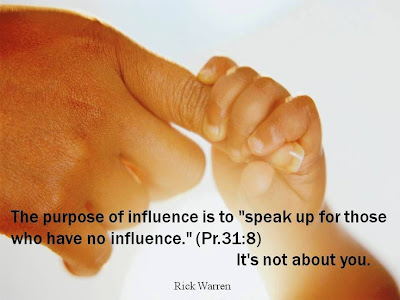What's Missing in Strategic Planning, Pt. 2
 |
| Source unknown |
- Scenario Planning: We can no longer put together plans that show a path from A to Z. Consider that this morning Moody's lowered the bond rating for Germany, a global leader in education, health care, and manufacturing that has kept Europe from collapsing. How many U.S. cities are facing bankruptcy because previous administrations existed on unrealistic business models? Historically Intel started out as a memory chip manufacturer, a business they completely abandoned in later years. Anyone invested in Myspace (RIP)? We must consider in the volatility of global economics we live in that there are multiple possibilities and prepare adequately for each. A couple of sources include Scenario Planning in Organizations (eBook) and this article from Kuan-Chou Chen, the IT Department head at Purdue-Calumet. Being capable and prepared for multiple scenarios requires:
- Flexibility: In America in particular but elsewhere as well our organizations are buried in bureaucracy and hierarchical structures with organizational charts that have a lot of white space in between them. That leads to protectionism among departments, budgets, and individuals and kills innovation and creativity. Having even recently seen business owners trying to revive their firms with 1970's business models,1990's pricing and no concept of 2020, let alone 2012, flexibility at all levels of the organization is mandatory. "But that's not how we do things here" is a call for a coroner. You can't preach flexibility and change from the top and remain in a tower separated from the rest of your team and customers. There are some ways that the Agile Management and Holacracy have gotten it right in terms of engagement and communication which builds trust and adaptability.

Holacracy - Robertson - Adaptability: If you're not aware of how much we fight change you're not paying attention. The fact remains that global and technological changes happen so fast that like the MySpace example opportunities to achieve momentary strategic advantage pass us by. Were the Big Three ready for Toyota, Honda and now Hyundai or the move to hybrid vehicles and higher gas mileage? Dell computers once swore they'd never be anything but direct-to-consumer seller. Been in Best Buy lately? Oh, they sell Dells now. As leaders and managers it's imperative that we understand what motivates ourselves and followers to change so we can more easily see and capture every fleeting opportunities. Read (or watch) Daniel Pink, Howard Gardner, and Gary Hamel.
- Organizational Learning: Does your organization give employees time to learn, grow and innovate? We've downsized so much that most of us are wearing so many hats we're working 50 hours a week and barely have time to breath. Given the economic forecast for the next several years, that's only going to get worse. Yet, if you need evidence that this pays dividends for short and long term organizational success, start with Google's 80/20 rule or 3M's days off. You have to develop a passion for learning, for self improvement and organizational development within the team. And as leaders, you need to understand what your employee's dreams are. This isn't about wasting time on Facebook (though even that can generate ideas), and the only way we know that they're learning is by asking them to share what they've learned. If you've never read Employees First, Customers Second, you simply must.
- Value vs. Efficiency: There are too many levels between organizational decision makers and the customer, whether that's B2B, consumers, governments, or for non-profits, the donor. There's another round of layoffs, downsizing and outsourcing coming. If you don't believe that you're not paying attention to what's happening globally. As I've written before though, there's plenty of efficiencies that can be gained within most of our organizations without cutting jobs, we just don't engage our teams in ways that
enable us to do so. As Gary Hamel writes "Most companies are long on accountants and short on artists. They are run by executives that know everything about cutting cost and nothing about value." Value creation comes from people, not things. We can only LEAN our organizations so much before we've devalued the human beings that delight customers. Then they leave us for an organization that knows where to place priorities. We must be efficient, but not at the cost of destroying our ability to create because we're too burned out.
Is it time to shred the outdated and bureaucratic strategic plan sitting on a shelf somewhere? Probably would be the best thing you could do for the organization and yourself.



I posted this response on Google+, but thought I'd copy it here for the blog readers:
ReplyDeleteHi Jon. I work with HolacracyOne and I saw this post where you mention Holacracy, and although I think Holacracy has a lot to say about the agile principles you mention, I thought I'd add a comment about the strategy aspect. I can't agree more on the obsolescence of conventional strategy plans. And yet the function of strategy (i.e., providing direction when prioritizing between all the different projects we could take on) is still useful.
The way we're framing strategy at HolacracyOne is by making a prioritization of one pole of a polarity over another, granted that both poles are "good" principles. But we choose one over the other. For instance, part of the strategy for our Content & Outreach circle is Easing Content Pull over Pushing More Content (http://bit.ly/Ra1B3i ). Both Easing Content Pull and Pushing More Content are valuable, useful things, but given our current context, we choose to prioritize the former over the latter.
It is not a plan to follow, but a guidance for when we reach a fork in the road and there is choice to make between two valuable options. Kind of a North Star, as opposed to a clearly defined map, because we know that the territory is ever changing anyway.
Thank you Olivier.
ReplyDelete